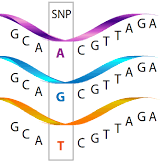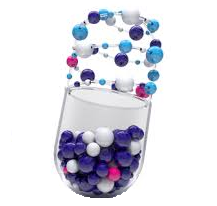Contents

lncRNA
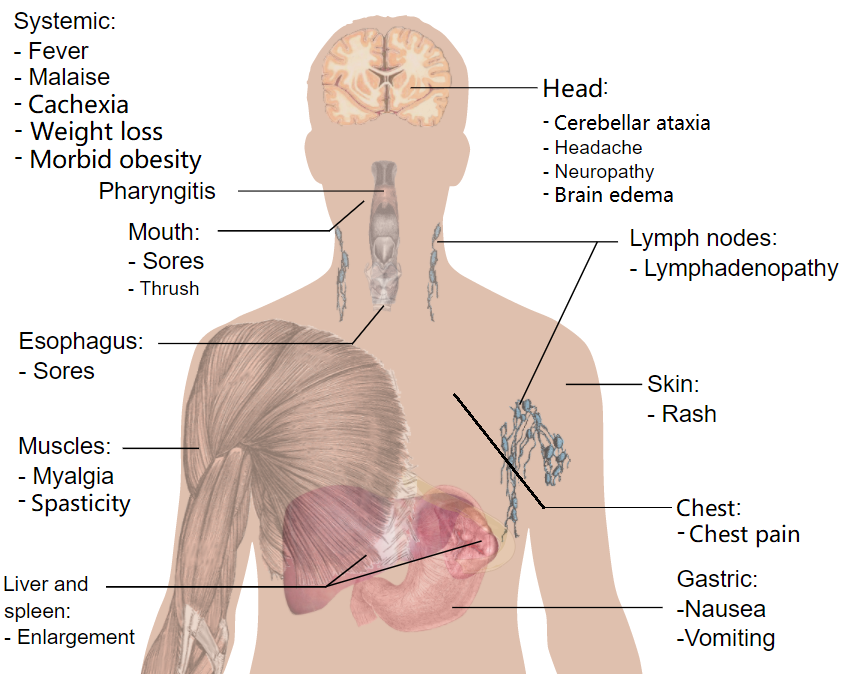
symptom
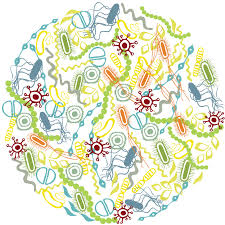
microbe
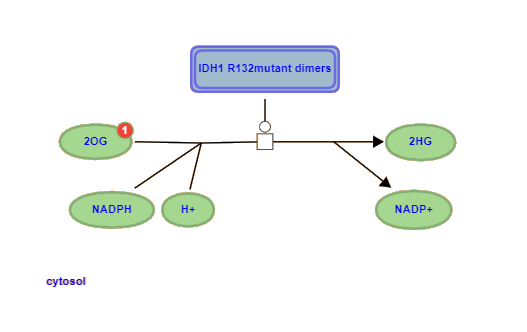
pathway
Associations
Genes are the sequences of nucleotides in DNA or RNA, which are the carrier of life information
and play an important role in healthy organisms. If gene mutations or abnormalities in the process
of gene expression occur, it may lead to diseases.
The disease-gene associations are curated from two database: DisGeNET
and ClinVar, which
contains 9533 genes, 11313 diseases and 83693 associations.
| Column | Filed |
|---|---|
| 1 | Disease id (UMLS CUI) |
| 2 | Disease name |
| 3 | The Entrez id of a gene |
| 4 | The symbol of a gene |
- Piñero J, Bravo À, Queralt-Rosinach N, et al. DisGeNET: a comprehensive platform integrating information on human disease-associated genes and variants[J]. Nucleic acids research, 2016: gkw943.
- Landrum, Melissa J., et al. "ClinVar: public archive of interpretations of clinically relevant variants." Nucleic acids research 44.D1 (2016): D862-D868.
Long non-coding RNAs (lncRNAs) are the class of non-coding RNAs longer than 200 nucleotides and have a great
impact on transcriptional, post-transcriptional regulation and chromatin modification. The mutated and
dysfunctional lncRNAs have negative influence on gene expression, and even cause the occurrence of disease.
The disease-lncRNA associations are curated from
LncRNADisease v2.0, which contains 5865 lncRNA, 426 diseases and 10059 associations.
| Column | Filed |
|---|---|
| 1 | Disease id (UMLS CUI) |
| 2 | Disease name |
| 3 | The name of a lncRNA |
| 4 | The PubMed id of the related paper |
- Bao Z, Yang Z, Huang Z, et al. LncRNADisease 2.0: an updated database of long non-coding RNA-associated diseases[J]. Nucleic acids research, 2019, 47(D1): D1034-D1037.
- Chen G, Wang Z, Wang D, et al. LncRNADisease: a database for long-non-coding RNA-associated diseases[J]. Nucleic acids research, 2012, 41(D1): D983-D986.
MicroRNAs (miRNAs) are the small non-coding RNA molecules that are widely present in eukaryotes and are about 22 nucleotides long. It plays an important role in regulating gene expression, cell cycle, and organism developmental timing. There are many studies to support the relevance between miRNA and human disease The disease-miRNA associations are curated from HMDD and miRCancer, which contains 1609 miRNAs, 829 diseases and 40965 associations.
| Column | Filed |
|---|---|
| 1 | Disease id (UMLS CUI) |
| 2 | Disease name |
| 3 | The name of a miRNA |
| 4 | The PubMed ID of the related paper |
- Huang Z, Shi J, Gao Y, et al. HMDD v3. 0: a database for experimentally supported human microRNA–disease associations[J]. Nucleic acids research, 2019, 47(D1): D1013-D1017.
- Xie B, Qin D, Han H, et al. miRCancer: a microRNA–cancer association database constructed by text mining on literature. Bioinformatics, 2013, 29(5):638-644.
The symptoms are the special knowledge of individual disease from the community health professionals and
general practitioners, which are crucial in clinical diagnosis and treatment and represent the highest
level clinical phenotypes. The occurrence of abnormal states in human body often insinuates the imbalance
of normal functions and can even be used as a sign of disease. In practice, the symptoms are always used
as a bridge for communication between doctors and patients so that they can be considered the most
directly observable characteristics for a disease. In this dataset, there are 6058 diseases and 321 symptoms.
| Column | Filed |
|---|---|
| 1 | Disease id (UMLS CUI) |
| 2 | Disease name |
| 3 | Symptom id (MESH identifier) |
| 4 | The name of a symptom |
- Zhou X Z, Menche J, Barabási A L, et al. Human symptoms–disease network[J]. Nature communications, 2014, 5(1): 1-10.
Single nucleotide polymorphisms (SNPs) mainly refer to DNA sequence polymorphism caused by mutation of a single nucleotide at genome level. It is the most common form of human heritable variation and accounts for more than 90% of all known polymorphisms. It is well known that non-coding disease-associated SNPs in regulatory regions of the genome may cause gene disorders at transcriptional or post-transcriptional levels. The disease-SNPs associations are collected from DisGeNET and the retrieved result with SNPcurator, which is a tool to explore the relationships among diseases and SNPs. We finally get 347459 associations, 11154 diseases, 179685 SNPs.
| Column | Filed |
|---|---|
| 1 | Disease id (UMLS CUI) |
| 2 | Disease name |
| 3 | The name of a SNP |
| 4 | The PubMed id of related paper |
- Tawfik N S, Spruit M R. The SNPcurator: literature mining of enriched SNP-disease associations[J]. Database, 2018.
- Piñero J, Bravo À, Queralt-Rosinach N, et al. DisGeNET: a comprehensive platform integrating information on human disease-associated genes and variants[J]. Nucleic acids research, 2016: gkw943.
The microbes are small and simple organism, which can be divided into many kinds and lives everywhere. Some microbes living in the organism participate in various life activities and play an important role in main-taining organism health. The disease-microbe associations are curated from the existing literatures by text-mining. In total, there are 32 human disease and 289 microbes.
| Column | Filed |
|---|---|
| 1 | Disease id (UMLS CUI) |
| 2 | Disease name |
| 3 | The name of a microbe |
| 4 | The organs used for microbiome sequencing |
| 5 | The deregulatory evidence of a microbe |
| 6 | The PubMed id of related paper |
- Ma W, Zhang L, Zeng P, et al. An analysis of human microbe–disease associations[J]. Briefings in bioinformatics, 2017, 18(1): 85-97.
The drugs are a class of substances that are artificially sent into the body to repair human abnormalities and their information is consolidated in some specialized databases, such as DrugBank and KEGG drug. The associations between diseases and drugs are an important resource for disease-related research. The disease-drug associations are curated from CTD and KEGG. In total, there are 10057 human disease, 17454 drugs and 5708411 associations.
| Column | Filed |
|---|---|
| 1 | Disease id (UMLS CUI) |
| 2 | Disease name |
| 3 | The id of a drug |
| 4 | The name of a drug |
- Mattingly, Carolyn J., et al. The Comparative Toxicogenomics Database (CTD). Environmental health perspectives, 2003, 111.6: 793-795.
- Kanehisa M, Goto S. KEGG: kyoto encyclopedia of genes and genomes[J]. Nucleic acids research, 2000, 28(1): 27-30.
The biological pathway is a series of interactions among molecules in a cell that leads to a
certain product or a change in a cell. It is related to molecular signaling, metabolic processes.
The destroy, missing or break-down of some pathways often leads to the occurrence of disorders and
even disease in organisms.
The disease-pathway associations contain 10150 diseases, 2973 pathways and 1897916 associations.
| Column | Filed |
|---|---|
| 1 | Disease id (UMLS CUI) |
| 2 | Disease name |
| 3 | The pathway id (KEGG, Reactome or wikipathway) |
| 4 | The name of a pathway |
- Mattingly, Carolyn J., et al. The Comparative Toxicogenomics Database (CTD). Environmental health perspectives, 2003, 111.6: 793-795.
- Slenter D N, Kutmon M, Hanspers K, et al. WikiPathways: a multifaceted pathway database bridging metabolomics to other omics research[J]. Nucleic acids research, 2018, 46(D1): D661-D667.


